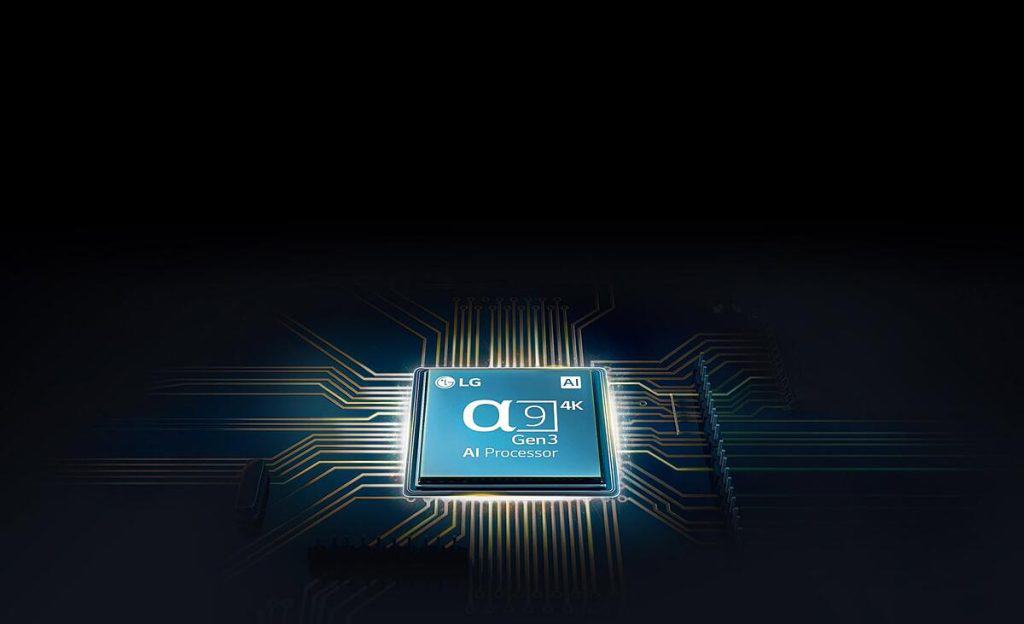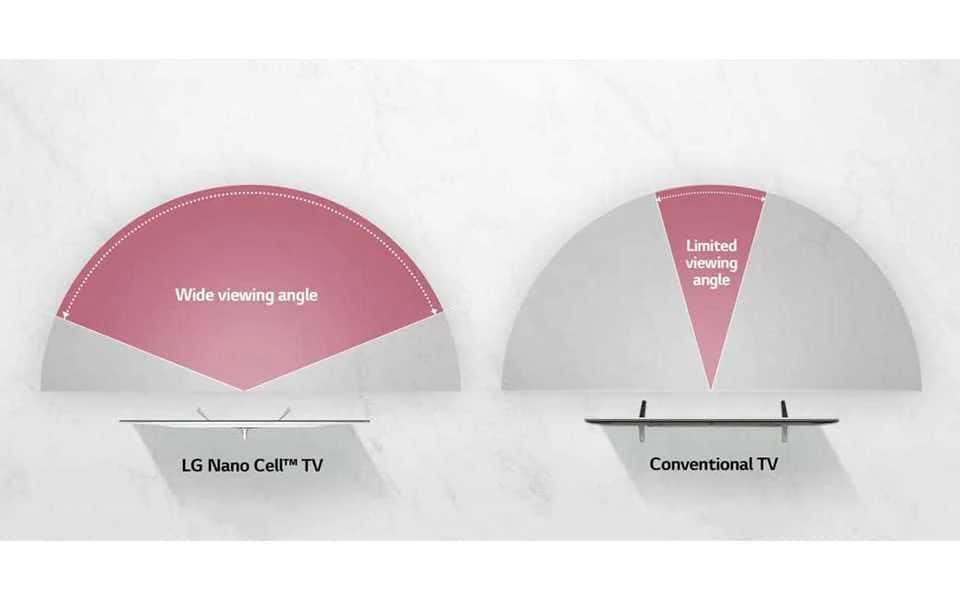LG is one of the top manufacturers in the world of premium TVs, closely following Samsung and Sony. Its OLED series features some very pricey sets with remarkable performance characteristics. From this perspective, the company’s GX and G1 models represent the best that this manufacturer has to offer, including the ultra-thin gallery design panel. Our LG GX vs G1 comparison post covers everything you need to know about these two top-quality TVs.
LG GX vs G1
LG GX

LG GX is a great TV for a home cinema setup. Not only does it provide impeccable OLED picture quality, but it also boasts a gorgeous and sleek design. Although this TV can’t get very bright, it delivers impressive upscaling and excellent Smart TV properties. Here are GX’s most significant pros and cons:
Pros:
- Reliable and top-quality WebOS platform
- Infinite contrast ratio
- Thin and gorgeous design
- Very wide viewing angles
Cons:
- Expensive
- No HDR10+ support
LG G1

The G1 is a big improvement over previous LG OLED TVs like the C1. It’s an excellent all-around TV without any significant drawbacks that would deter anyone from buying it. Perhaps its strongest components are the great gaming features and remarkable input characteristics. With that in mind, here’s a quick look at some of G1’s biggest advantages and disadvantages:
Pros:
- Reliable and top-quality webOS platform
- Infinite contrast ratio
- Impressive motion technology
- Great gaming capabilities
Cons:
- The bass is a bit disappointing
- No HDR10+ support
Features Face to Face
Panel Technology
These two models have LG’s trademark OLED panels. OLED (Organic Light-Emitting Diodes) panels use thin organic films between their two-panel conductors. This design makes OLED TVs generally lighter, thinner, and more flexible than other TV panel types. Additionally, OLED TVs offer advantages such as infinite contrast ratio and impressively wide viewing angles.
For a more detailed overview of OLED’s capabilities and the differences between this panel technology and other panel types such as QLED, we recommend you read our OLED vs QLED post.
Image Processor

The GX and G1 come with LG’s sophisticated in-house α9 AI processor. The GX has the Gen 3 processor, while the G1 has the Gen 4 processor. However, this generational difference isn’t significant enough to provide the G1 with any notable advantage in this category, as both processors have almost identical performance characteristics.
The α9 AI processor possesses advanced AI upscaling capabilities and a very capable deep-learning algorithm that improves the quality of content by optimizing key picture qualities such as contrast and image saturation.
Motion Technology
The LG GX and the G1 both come with outstanding motion technology. Like all other OLED TVs, these two models deliver near-instantaneous response times. In other words, motion always looks smooth on these TVs, and there’s nearly no blur or motion artifacts behind fast-moving objects.
The LG GX can fully transition from one color to another in just 2.3 milliseconds to put this into precise numbers. In comparison, the G1 does so in 2.4 milliseconds. Both are significantly below the 14-millisecond mark, separating TVs with good motion technology from those with disappointing response times.
Picture Quality
As the two TVs use the same panel technology and are in a similar price range, you can expect them to deliver nearly identical image resolutions. For a more detailed rundown of all of the supported resolutions available on the GX and the G1, check out the table below:
| Resolution | LG GX | LG G1 |
|---|---|---|
| 4K/120Hz | Yes (Native Support) | Yes (Native Support) |
| 4K/60Hz/4:4:4 | Yes | Yes |
| 4K/60Hz | Yes | Yes |
| 1440p/120Hz | Yes (Native Support) | Yes (Native Support) |
| 1440p/60Hz | Yes (Force Resolution) | Yes (Force Resolution) |
| 1080p/120Hz | Yes (Native Support) | Yes (Native Support) |
| 1080p/60Hz/4:4:4 | Yes | Yes |
Contrast Ratio / Black Level
Another outstanding characteristic of all LG OLED TVs, including the GX and the G1, is that they have an infinite contrast ratio, outperforming any other TV on the market when it comes to this category. The GX and the G1 can turn off individual pixels, which allows them to produce perfect blacks no other non-OLED TV can offer.
Local Dimming
Neither the GX nor the G1 has a backlight, so they don’t have a local dimming feature. Still, they have an infinite contrast ratio and can dim each pixel individually, so they can perfectly display bright objects and subtitles without any blooming issues. This means that the GX and the G1 excel at displaying dark scenes in dark viewing environments.
Peak Brightness
For their price tags, the GX and the G1 leave us wanting more peak brightness performance. This is because these two TVs offer just okay peak brightness numbers. They can get bright enough to offer solid performance in moderately lit rooms but often not enough to combat a very bright viewing environment.
This is especially noticeable when they try to sustain high brightness over a larger display area, as both TVs struggle to do so. With that in mind, if you want better peak brightness numbers and a TV more suitable for a bright room, we recommend going with one of Samsung’s QLED models, like the Q80 or the Q90.
Comparing their peak brightness values, the two TVs offer nearly identical SDR peak brightness, while the G1 is a bit better for HDR peak brightness. For a closer look at how their numbers perform, here’s a direct LG GX vs G1 peak brightness comparison table.
| Brightness Values | LG GX | LG G1 |
|---|---|---|
| Peak 10% Window SDR Brightness | ∼ 390 nits | ∼ 405 nits |
| Peak 100% Window SDR Brightness | ∼ 175 nits | ∼ 170 nits |
| Peak 10% Window HDR Brightness | ∼ 740 nits | ∼ 830 nits |
| Peak 100% Window HDR Brightness | ∼ 140 nits | ∼ 165 nits |
Color
The GX and the G1 have near-perfect color coverage of the DCI P3 space and good coverage of the wider Rec. 2020 color space. To put it simply, they have an equally excellent color gamut, great for watching HDR content through streaming platforms and Blu-ray.
Furthermore, these two TVs can display dark and saturated colors very well thanks to their infinite contrast ratio and wide color gamut. But, on the other hand, they sometimes fail to bring the best out of the brighter colors.
Viewing Angle

Like all LG OLED panels, the GX and the G1 deliver outstanding viewing angles. They can retain image quality even at extensive viewing angles, making them perfect for wide seating arrangements and large rooms.
The two TVs perform very similarly in this category, as they only start showing brightness loss, gamma shifts, and black level raises at viewing angles between sixty and seventy degrees.
Reflections / Anti-glare
The GX and the G1 possess equally impeccable reflection handling capabilities. They both have a glossy screen finish, the preferred finish for handling ambient light. Thanks to this screen finish, the GX and the G1 reflect only about 1.5% of total light and just around 0.2% of all indirect reflections.
All of this means that these two TVs perform excellently even in rooms with a lot of glare. Moreover, even direct sunlight doesn’t present much problem for these two TVs, so you won’t have any issues even if you place the GX or the G1 opposite a window.
Sound Quality
The LG GX and the LG G1 both have a good frequency response. They also have well-balanced sound profiles and can get very loud without sacrificing sound quality or compromising the clarity of the dialogue. There isn’t almost any distortion at normal volume levels and minimal distortion at maximum volume.
These two TVs can produce more bass than most premium TVs. Still, they can’t get low enough to produce a significant thump or rumble you would expect when watching movies on your home cinema setup.
With this in mind, the GX and the G1 deliver a good sound quality overall. Still, regardless of which of the two models you decide on, we recommend pairing your LG TV with a dedicated subwoofer for the best audio experience.
Smart TV Platform (Operating System)
There’s very little room to differentiate the GX and the G1 through their OS platforms, as these two TVs use the same WebOS smart TV platform, LG’s in-house operating system that comes with all newer LG models. Still, there are minute differences between these two models, as the GX uses a 5.0 version, while the G1 employs the newer 6.0 version.
Most notably, these dissimilarities are noticeable when navigating the menu and browsing the general settings. More precisely, the G1 is a bit faster in applying the changes and commands you give it, as it only takes a couple of seconds to do so. In comparison, the GX needs a few more seconds to carry out these tasks.
Other than that, the two TVs have pretty similar OS characteristics. They are equally easy to use and are pretty smooth to navigate. Additionally, the two TVs feature tons of advanced options and support a great selection of apps.
Connectivity
If you’re looking to build a high-performing home cinema with either of these TVs or use them as gaming monitors, it’s critical to know all of their connectivity properties. To help you better understand all of the determining connectivity factors that make up these two models, we’ll do a thorough LG GX vs G1 comparison through three essential connectivity features. These are inputs, voice assistants, and wireless technologies.
Inputs
Comparing the physical input specifications of these two models shows no differentiation as the GX and the G1 come with an identical number of key input ports. Here’s a closer look at the most significant input specifications you can expect from the GX and the G1:
| Input Ports | LG GX | LG G1 |
|---|---|---|
| HDMI Ports | 4 HDMI 2.1 Ports | 4 HDMI 2.1 Ports |
| USB Ports | 3 USB 2.0 Ports | 3 USB 2.0 Ports |
| Digital Optical Audio Out | 1 Port | 1 Port |
| Ethernet Port | Yes | Yes |
Additionally, it’s important to mention that the GX and the G1 offer very impressive input lag numbers. That said, the latter model performs slightly better. The input lag on the G1 is around ten milliseconds across all supported resolutions. In comparison, the GX has an input lag of around 13.5 milliseconds. Still, both TVs are well below the 25-millisecond mark that every good gaming TV should clear.
Voice Assistants
Although the GX comes with the 2020 Magic Remote and the G1 features a newer, redesigned remote version, the two TVs have the same voice assistant properties. The built-in microphone in the remotes allows you to employ the voice assistant to change inputs, open apps, search for content, and even adjust settings like changing the brightness.
Wireless Technologies
The GX and the G1 support the standard Wi-Fi options (2.4 GHz, 5 GHz), enough for general mixed usage like streaming online content or browsing the Internet through their interface. In addition, the two models possess Bluetooth support, allowing you to pair additional devices like speakers or video players for a more immersive viewing experience.
Standout Features
These two TVs are pretty similar across the board, so neither model has any significant standout features. That said, the GX and the G1 have a handful of standout features that separate them from other TVs, particularly lower-priced ones.
From a gaming perspective, these two TVs support VRR, FreeSync, and G-SYNC. Movie enthusiasts should also know that both the GX and the G1 also come with Dolby Vision and HLG. However, neither TV supports HDR10+.
Conclusion
To sum up this LG GX vs G1 comparison post, we can say that these two TVs offer equally phenomenal picture quality and awesome all-around performance features.
There are only minor differences between the two models, as the G1 features a redesigned remote, a newer WebOS version, and a slightly higher HDR peak brightness. Still, neither of these is enough to give it a significant edge over the GX.
Considering this, if you’re shopping for a premium LG TV, you won’t make a mistake regardless of which of these two models you pick.